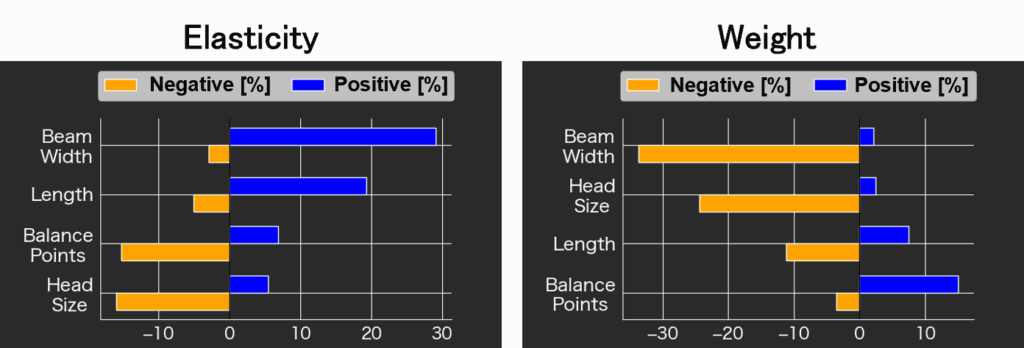This case study shows how Multi-Sigma® was used to design high-performance tennis rackets optimized for players at every skill level (advanced, intermediate, and beginner).
1. Prediction of Tennis Racket Elasticity and Weight
With Multi-Sigma®’s AI prediction feature, we built an AI model that captures the relationship between racket design parameters and performance. Using 191 measured data points, the AI model predicts racket elasticity and weight based on design values (length, area, center of gravity position (G.P.), and thickness).

2. Contribution Analysis for Elasticity and Weight
With Multi-Sigma®’s contribution analysis feature, we identified the factors that contribute positively (or negatively) to the elasticity and weight of tennis rackets. The analysis reveals that thickness and length significantly contribute to elasticity, while thickness and area have a major impact on weight.

3. Optimization of Tennis Racket Design Values by Skill Level
With Multi-Sigma®’s optimization function, we identified appropriate racket design length, area, center of gravity position, and thickness to achieve ideal elasticity and weight for each skill level.

(Note1)Note: The data used in this analysis was processed and edited based on the data published in the article below, under Creative Commons Zero 1.0 Universal (CC0 1.0) license.
Dataset: https://www.kaggle.com/datasets/leoyuanluo/tennis-racquets-specs
(Note2)Units of Each Value: Elasticity: RA value, Weight: ounces, Length: inches, Area: square inches, Center of gravity position: points (1 point = 1/8 inch, positive toward the racket tip), Thickness: mm.
